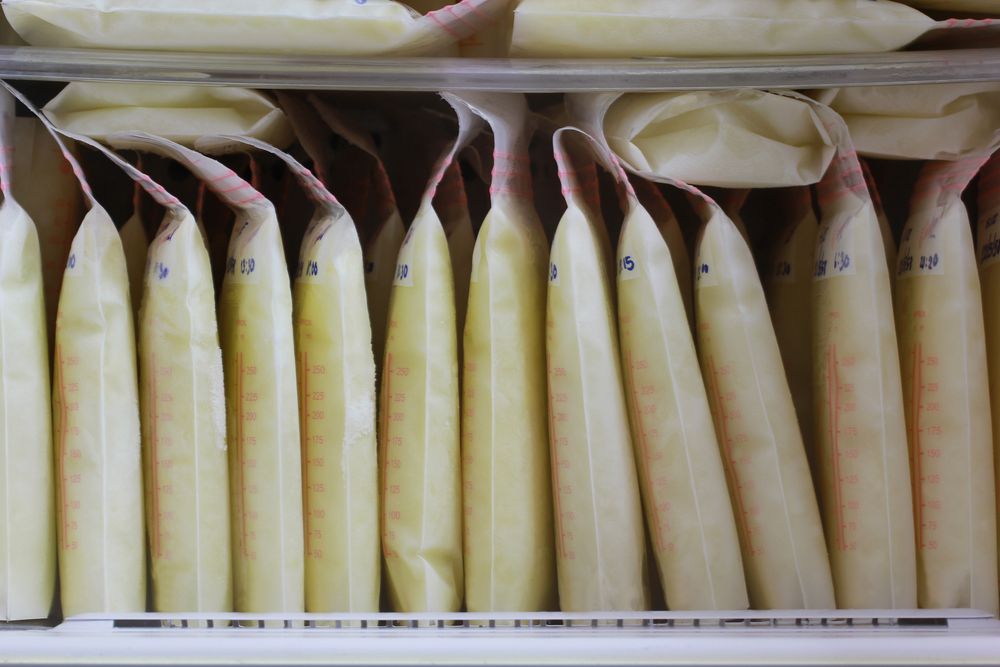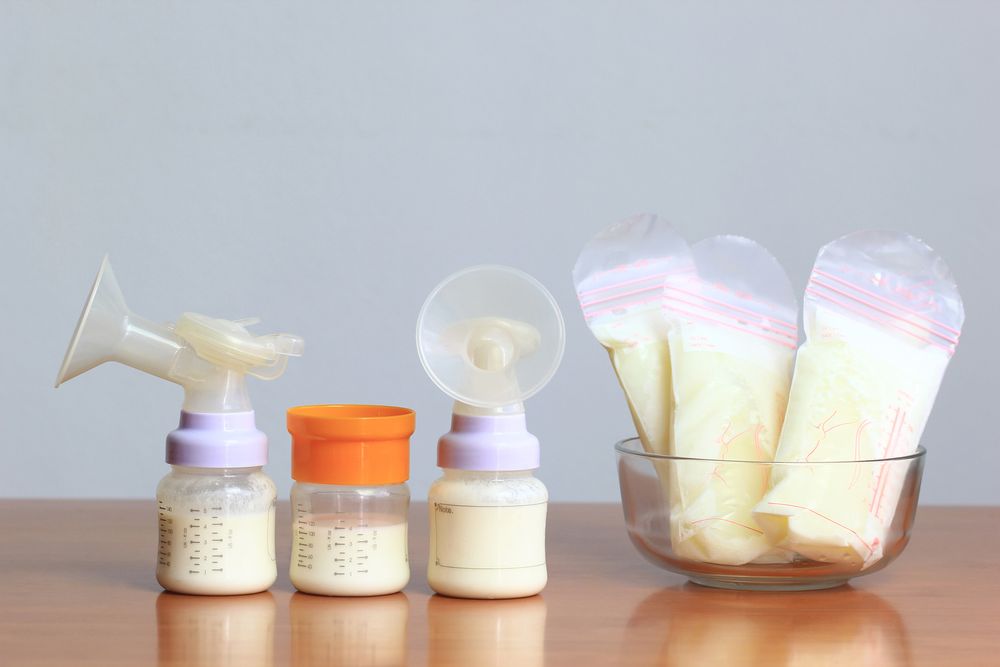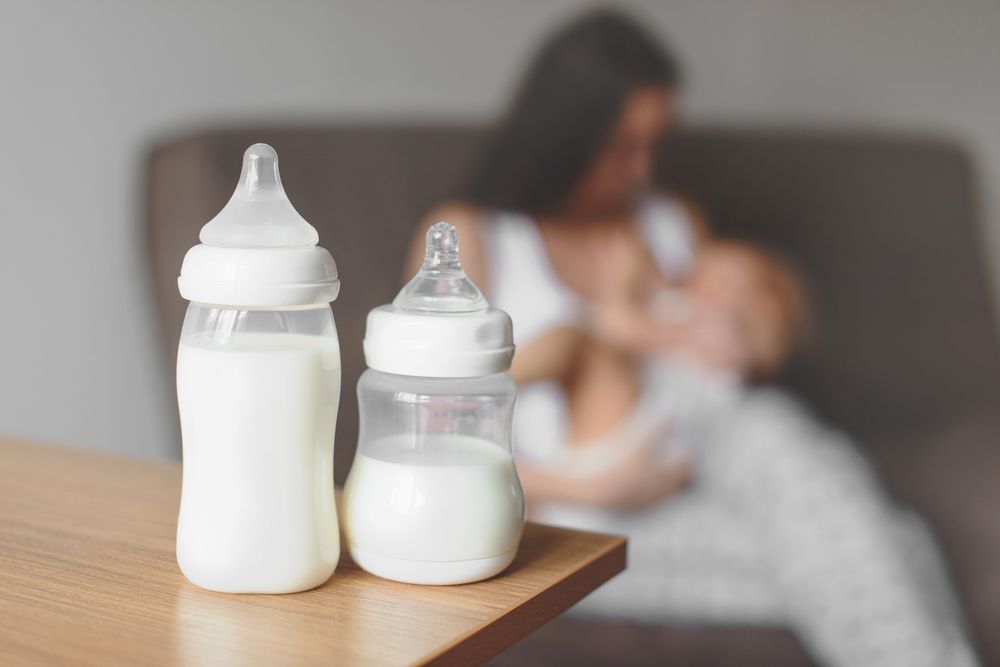How to Store Breast Milk: Tips and Tricks to Keep the Milk for Longer
Breast milk has numerous benefits since it’s packed with nutrients that are essential for your baby’s growth and development. Simply put, it contains antibodies that help protect your child from illness and infection.
Keep reading to discover how to store breast milk safely longer if you’re a stay-at-home or working mom.
Furthermore, breast milk is easy to digest and can help prevent diarrhea and other stomach problems. It can reduce your child’s risk of developing asthma, allergies, and other chronic health conditions later in life.
Besides, breast milk may also improve cognitive development and IQ scores. However, a lot of moms have trouble producing a steady amount of breast milk whenever their babies are hungry.
As such, it’s essential to take breast milk storage tips into account so that your child will never run out of healthy breast milk – even when you decide to combine it with store-bought formula.
How to Store Breast Milk Safely
To ensure the safety of your breast milk, you need to know how to properly store it. Knowing when to throw out breast milk can be difficult, so follow the next guidelines for proper storage.
Breast Milk Storage Guidelines
- Before refrigeration or freezing, fresh human milk ideally should have a temperature below 39 degrees Fahrenheit (3.9 degrees Celsius) and above room temperature. If your fresh milk is not within this temperature range, it’s best to warm it to 39 degrees Fahrenheit (3.9 degrees Celsius) before storage.
- To warm freshly expressed breast milk quickly, place the container of milk inside a pot or bowl filled with hot water and heat it up to 100 – 120 degrees Fahrenheit (37 – 48 degrees Celsius).
- Expose pre-frozen or refrigerated milk to warm temperatures only long enough to take it out of the freezer or refrigerator. If you must thaw frozen milk on the counter, use this time to check its temperature with a thermometer since room temperature varies.
- When thawed, you should use refrigerated milk within 24 hours and pre-frozen milk within 72 hours from the time it was expressed. Discard any milk that has been at room temperature or warmer for more than 2 hours.
- Do not refreeze previously frozen breast milk. When you are ready to use it, take out what you need and thaw the rest in the refrigerator. Your baby will probably not drink milk once frozen because of changes to its taste.
- You can store freshly expressed breast milk in a clean cooler with an ice pack for up to 8 hours when traveling. However, make sure to discard any unused milk after 6 hours in transport.
- If you are traveling away from home, promptly place freshly expressed milk in the refrigerator or arrange to ship it fresh. Moms should not routinely send pre-frozen milk by mail; thawing and refreezing can decrease its nutritional value.
Breast Milk Storage Guidelines for Working Moms
Working mothers who take their infants to childcare centers need to know how their babies’ needs will be met when they cannot be there. The following guidelines apply if your baby is fed expressed breast milk at childcare:
Refrigerated Milk
Your baby should receive the daily allowance of human milk within 1 hour of being separated from you unless there are other foods involved besides breast milk.
If so, your baby may get the entire day’s supply of human milk within 2 hours after you leave.
Furthermore, expressed refrigerated breast milk should be used within 24 hours, and any unused portions should be discarded.
Frozen Milk
Your baby may receive a day’s supply of frozen breast milk every 24 hours, or a total of 3 to 4 feeds per day if it’s possible to thaw each feed in a refrigerator overnight.
However, some facilities have an automatic defrosting device which makes this unnecessary. In this case, you don’t need to send extra frozen milk unless your caregiver requests it for backup purposes.
Breast Milk Storage FAQ
Learn more information about safely storing breast milk.
Can you freeze breast milk?
Yes, it’s possible to freeze breast milk.
How long can breast milk stay out?
Breast milk can stay out for up to 4 hours at room temperature (77 degrees Fahrenheit or 25 degrees Celsius).
How long is breast milk good for in the fridge?
When preserving breast milk in the fridge, you can rely on it for up to 4 days.
What are the best breast milk storage bags?
If you’re interested in buying the best breast milk storage bags, consider Lansinoh, Dr. Brown’s, or Philips AVENT.
How long to breastfeed?
Typically, a mother should breastfeed her baby for at least 6 months to provide appropriate nutrition and also help the toddler develop immunity.
What is colostrum?
Colostrum is the first milk that a mother produces for 3 or 4 days right after giving birth. It’s highly nutritious and rich in antibodies.
What is breast cream?
Breast cream refers to a variety of skincare products applied to the nipples, areola, and breast skin. They’re usually made with herbal ingredients that protect, moisturize, heal, or soothe irritated skin.
What is the best breast milk pump?
If you need to buy the best breastfeeding pump on the market, you should check out Spectra, Haakaa, and Medela.
Where can I safely pump?
You may pump anywhere where you are comfortable – at your desk, in your car, or even at home. However, avoid distracted environments such as coffee shops to prevent accidents.
How to hand express milk?
To hand express milk, you need to find a comfortable position. Then make sure the hands are clean before pressing on each breast several times in a downward motion, starting from under the areola.
Can you keep breast milk in the fridge?
Typically, fresh breast milk is only good for up to 6 hours in the fridge. However, freezing it can double its storage time.
How to defrost breast milk?
For slow defrosting, place the bag of milk in a bowl or sink full of warm water. Do not attempt to speed up the process by putting ice or hot water on it. You should also avoid microwaves and stoves; these may heat the milk unevenly, which could cause potential problems later.
How to thaw breast milk from the freezer?
You should never defrost breast milk under hot water, in the microwave, or on the stovetop. Instead, it’s safer to thaw frozen breast milk overnight in a refrigerator at 40 degrees Fahrenheit (5 degrees Celsius).
How to warm up breast milk?
When defrosting breast milk at room temperature, you should expect it to take about 3 hours. However, if you’re in a hurry, the best way to warm the milk is by placing it under hot running water. You can also submerge the closed container in a bowl of hot water for 5 minutes or so before opening and discarding the foil.
What is high-lipase milk?
Lipase is an enzyme that breaks down fat. It is usually found in abundance in breast milk, especially foremilk. However, there are cases when lipase levels are too high, causing the milk to taste soapy or rancid.
This usually occurs when the breast milk is not stored properly or on extremely hot days. If you’re concerned about your baby not tolerating the taste, you should discuss the matter with your doctor or lactation consultant.
How long can formula sit out?
You should never leave formula out for more than 1 hour because bacteria can grow quickly in it.
How long does alcohol stay in breastmilk?
Alcohol from breast milk usually dissipates within 2 to 3 hours. However, if your alcohol intake is a regular habit, your baby might be exposed to small amounts of it for a longer period of time.
How long is warmed breast milk good for?
If the breast milk was previously frozen, you can store it in the fridge for up to 24 hours. Otherwise, it’s recommended that you warm it up and have your baby drink it within 10 minutes.
How long should I pump?
You should pump for about 15 to 20 minutes, or until the milk flow slows down.
How long does it take for milk to come in?
Typically, milk production begins within 2 to 3 days after giving birth. However, each woman has her own personal experience.
How to combine breastfeeding and pumping?
If you are breastfeeding and pumping, there are a few things to keep in mind. First, try to pump at the same time each day to establish a routine. You may also want to pump after each feeding session.
Additionally, make sure to have enough pumped milk stored in the fridge or freezer so that your baby doesn’t go too long without breast milk.
How to produce more breast milk when pumping?
You can increase the amount of breast milk you produce by:
- Feeding your baby on demand and as often as he wants.
- Avoiding long separations.
- Massaging your breasts before and during pumping sessions.
- Pumping for at least 10 minutes.
How to tell if breast milk is bad?
If you open your container of breast milk and notice any discoloration, such as grayish streaks or other signs of mold, discard the milk immediately. Other signs of spoilage include a sour or rancid smell, visible particles or cloudiness, and consistency changes.
How to Store Breast Milk (Final Thoughts)
Breast milk is best for your baby. Yet, it can be hard to produce enough to meet the child’s needs. That’s why you should know how to store breast milk properly so that you don’t waste any of it.
If at any time the milk becomes contaminated, discard it immediately and thoroughly wash all items that came into contact with it before using them again.
Additionally, make sure that all people in your household understand how breast milk should be handled in order to avoid accidental spills or contaminations by someone who doesn’t know better.
What are your favorite tips and tricks for storing breast milk? Share your thoughts in the comment section below!



